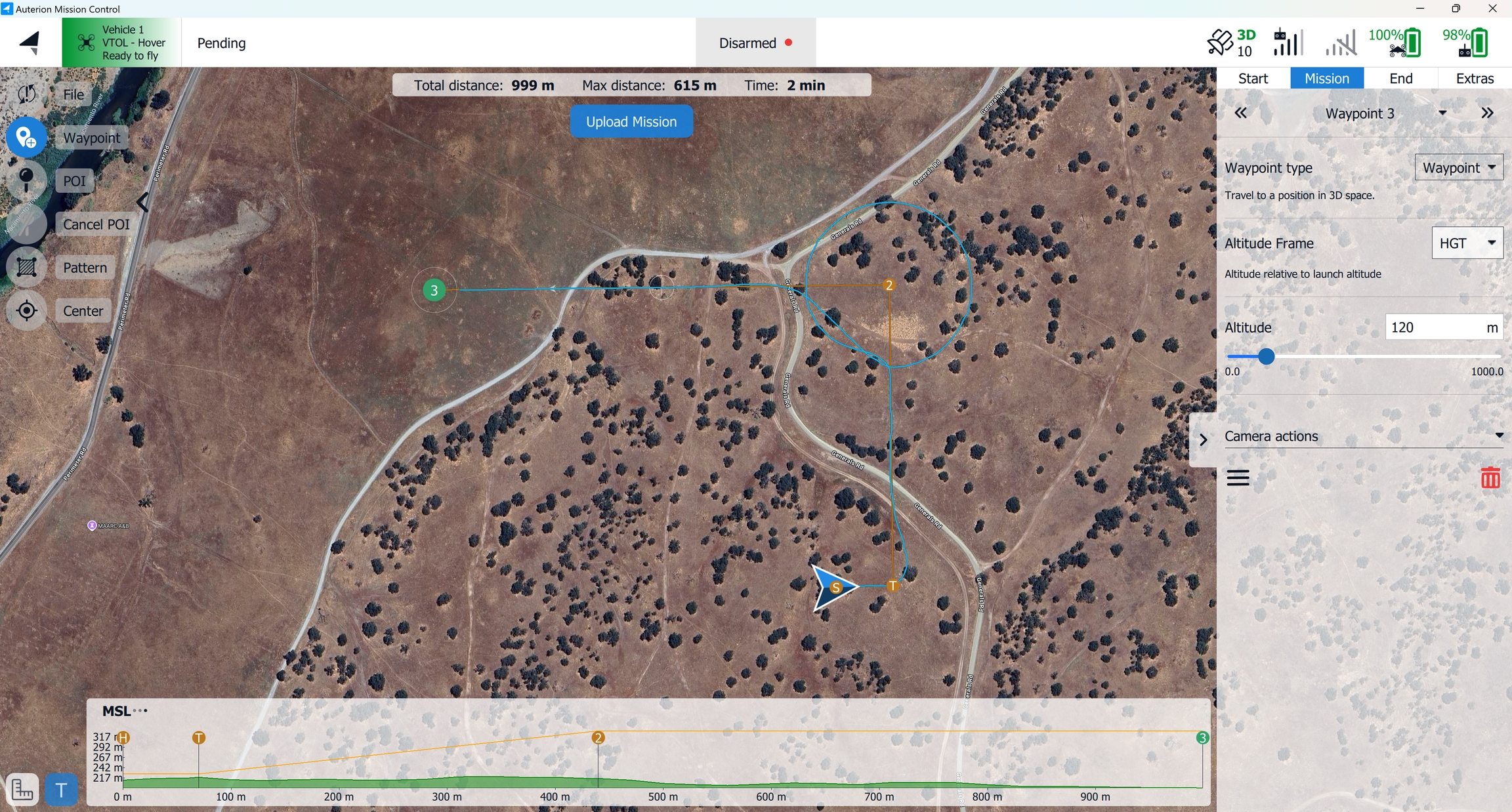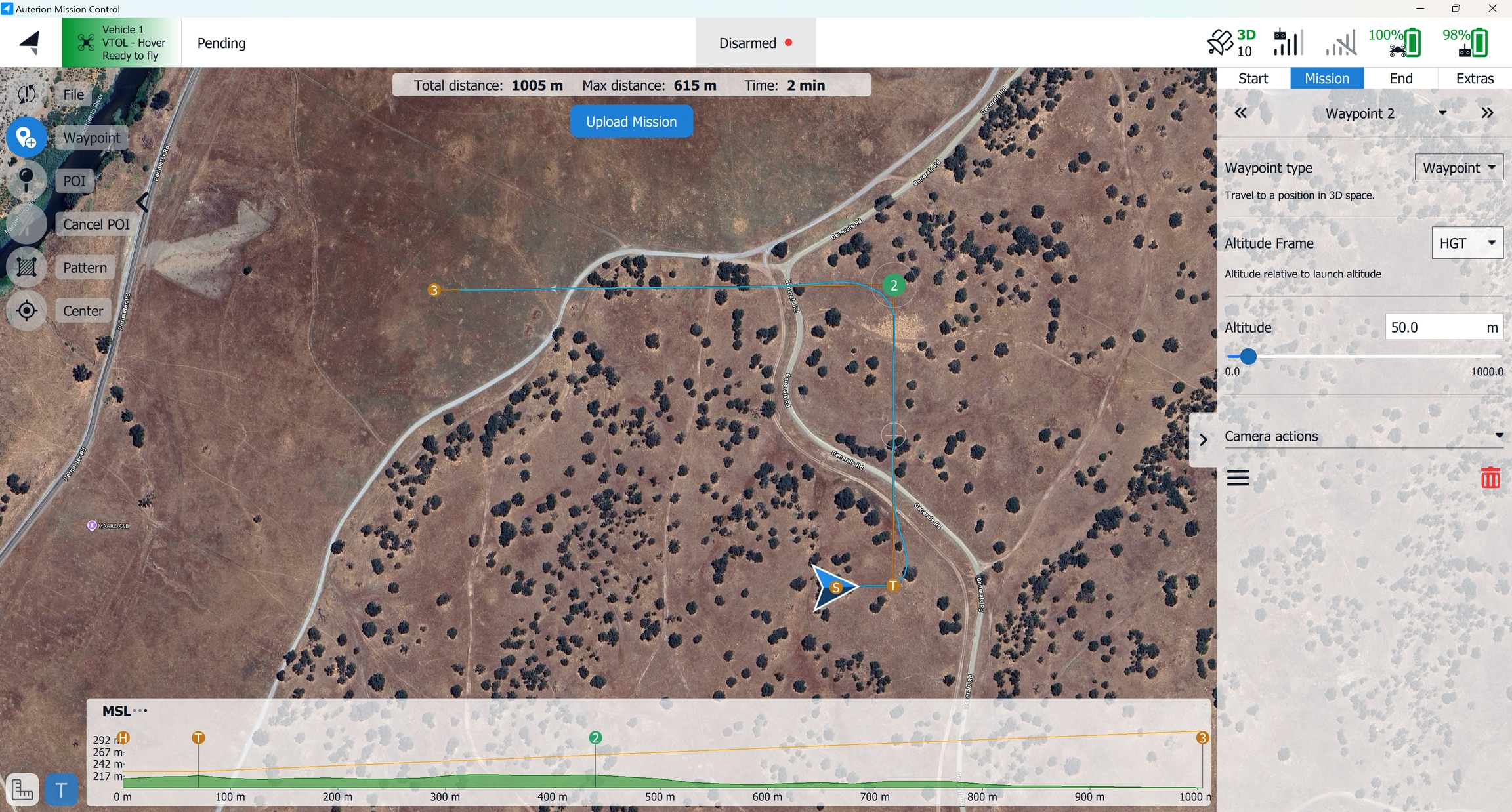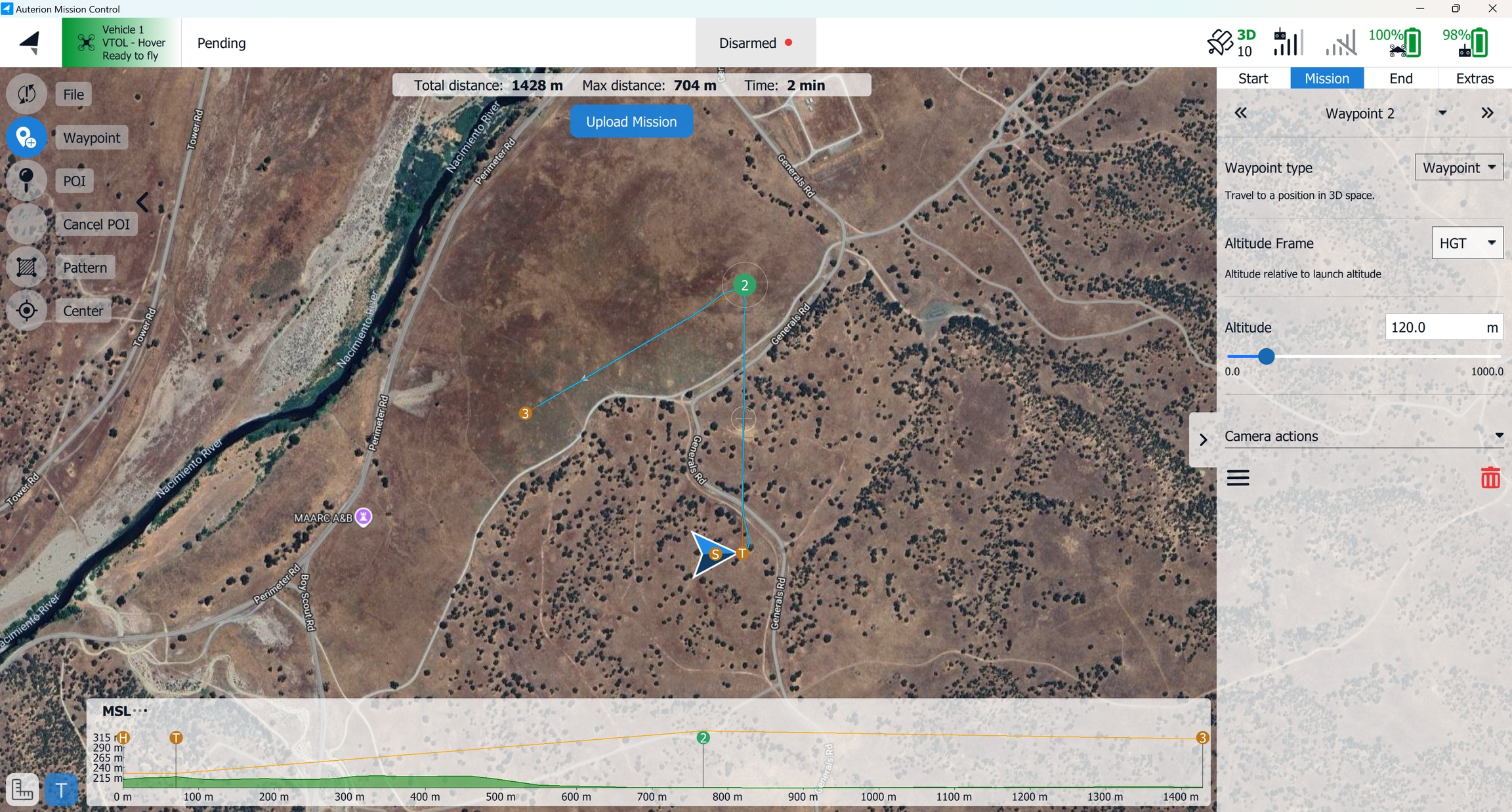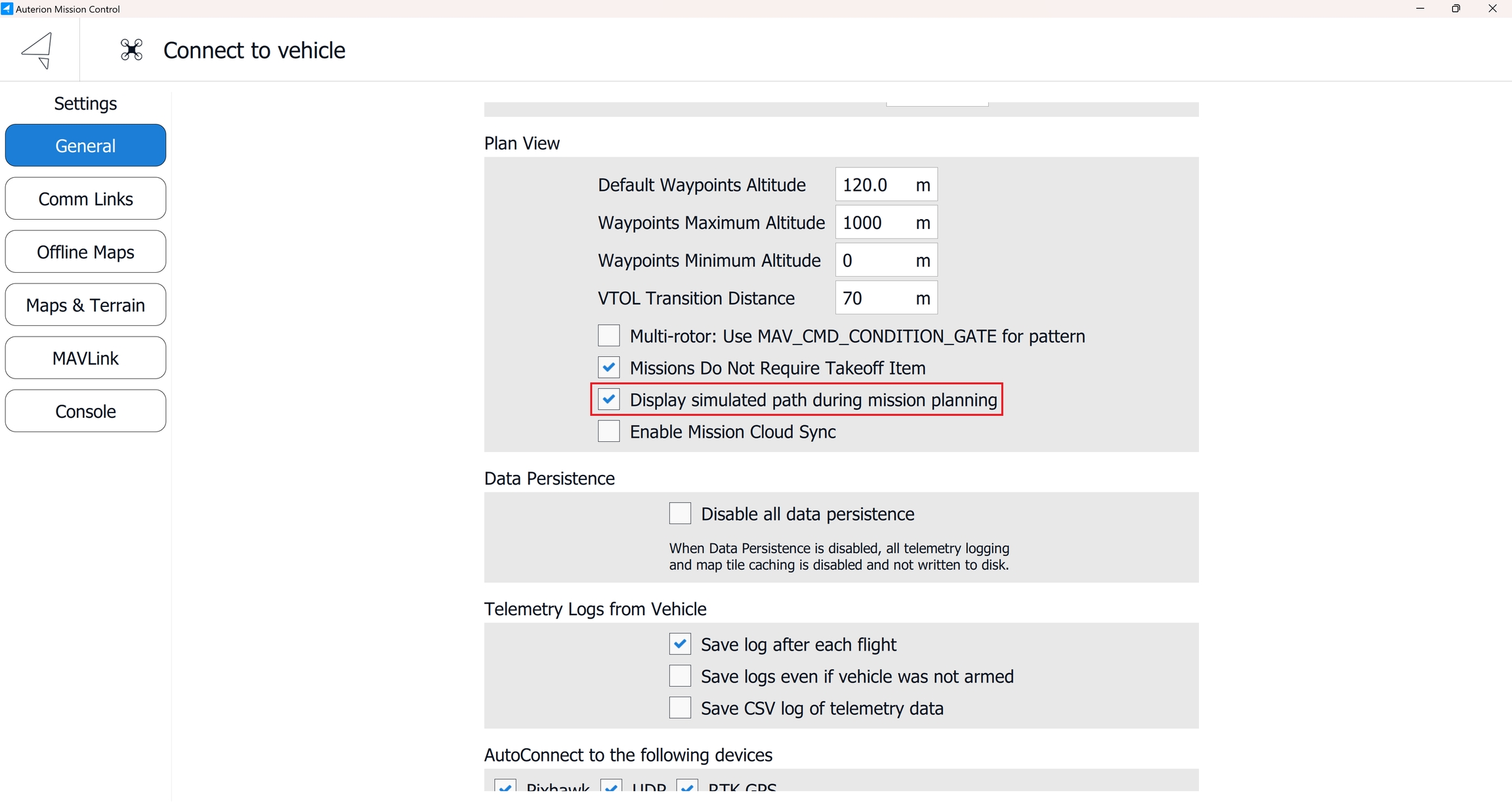Best Practices and Tips
This section provides practical tips for mission planning.
An internet connection is needed for AMC to access the necessary map and elevation data. When operating in offline mode, map and elevation data can be downloaded beforehand through the AMC Menu -> Settings -> Offline Maps.
The altitude calculations in AMC and any Geographic Information System (GIS) software, such as Google Earth, do not account for the height of trees and obstacles. However, Google Earth has a higher resolution in terms of altitude calculation. In challenging conditions, it is recommended to consult Google Earth and verify the correct altitudes of the mission area. Mission plans can be exported as a KML file by navigating to File -> Local Storage -> Save as KML and then imported into Google Earth. By moving the mouse around, you can see the absolute altitudes in the bottom right corner. Note: these are ground altitudes, not tree-top heights.


The flight path can be extended to the ground to visualize the space between the mission altitude and the ground. In Google Earth, select the Flight Path -> Properties -> Altitude -> check Extend path to ground.
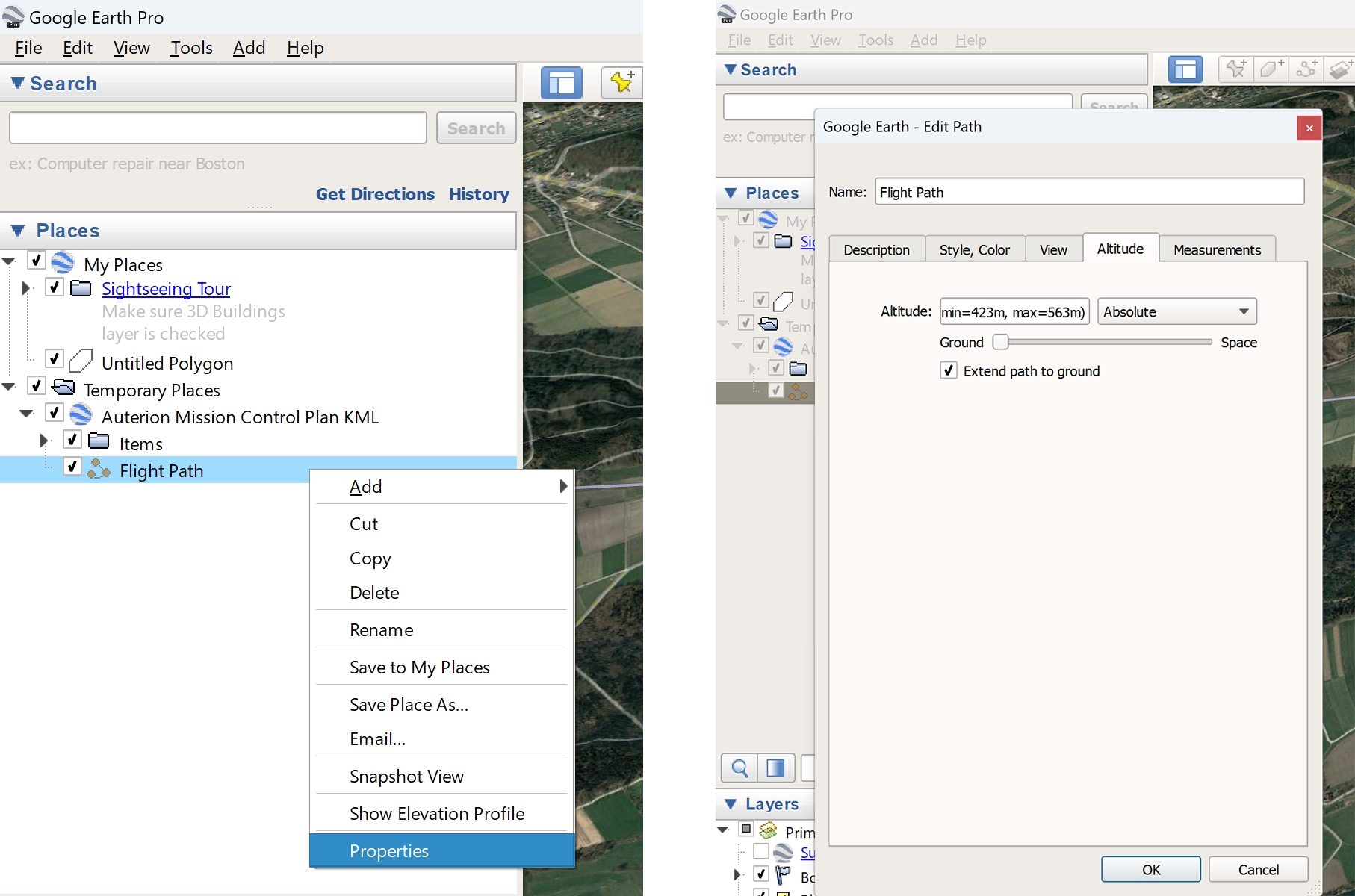
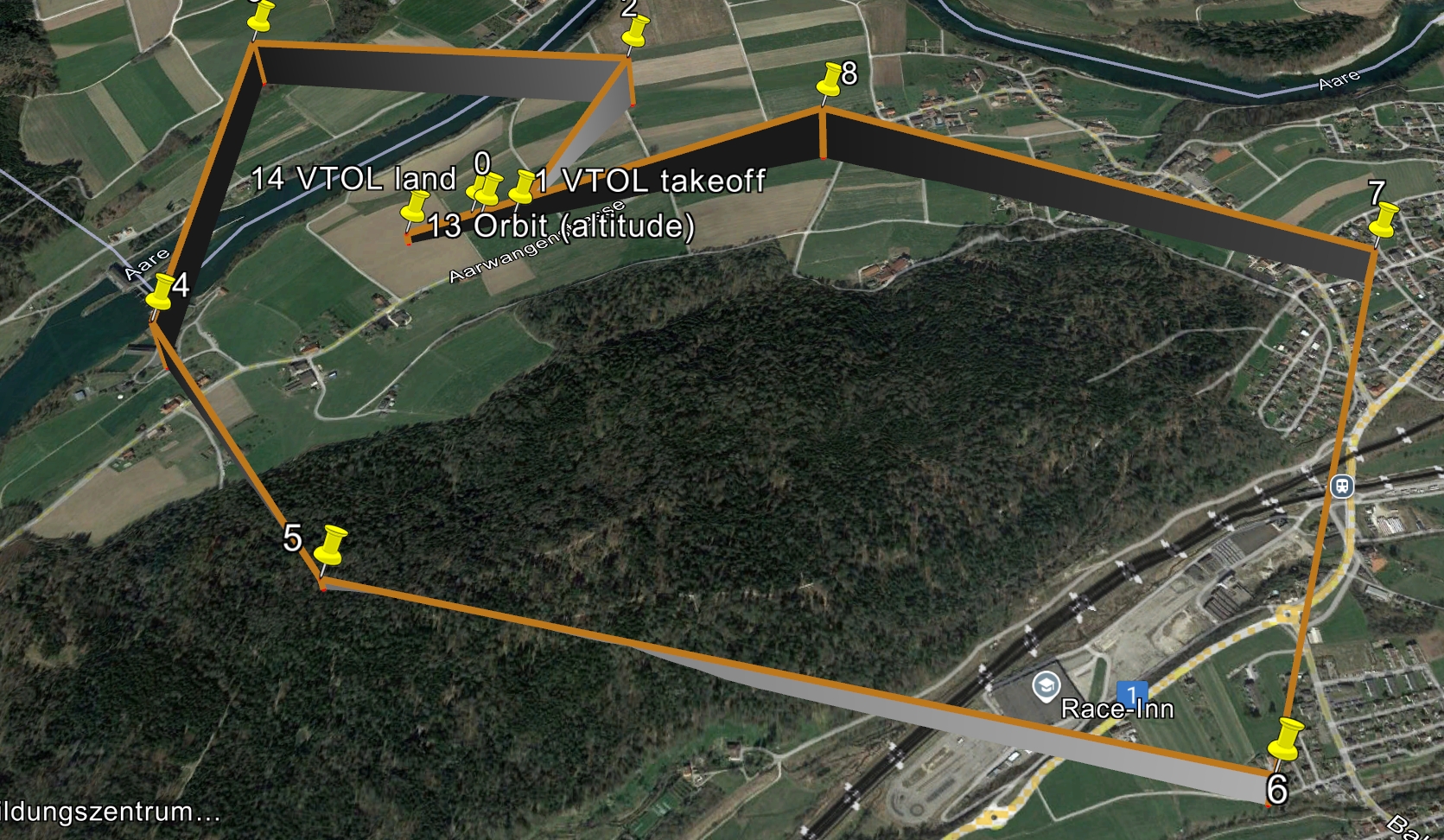
The indicated Orbit in the case of a loiter down is only an estimate. Based on wind conditions and the vehicle’s position, the DeltaQuad Evo may drift outside this circle by up to 100 meters. Therefore, be sure to thoroughly inspect the entire landing area and its surroundings.
In most cases, the Straight Land Pattern is a better approach and is the recommended standard for the landing pattern.

Planning altitudes should always be done relative to the Landing Point (HGT), and altitude differences between the Landing Points and the location of the Landing Orbit should be checked to ensure a safe landing.
A vertical takeoff or landing in Multirotor Mode (Hover) consumes significantly more energy than a Fixed-Wing (Aero) flight. For maximum efficiency, an altitude between 25 and 35 meters above the highest obstacles in the landing area is recommended for landing.
At every stage in the Fixed-Wing portion of the flight, a vertical separation of at least 25 meters above the highest obstacle must be maintained.
Most wind forecasts are based on ground-level wind. Even 10 meters above the ground the wind can be significantly stronger.
During the transition phase of the Transition Direction item, the vehicle has limited navigational abilities and could drift from its intended direction. The transition should therefore always be performed at an altitude where it is safe for the vehicle to perform the transition in any direction.
When planning a mission in the Plan View, a simulated flight path prediction is available if the DeltaQuad Evo is connected to the GCS. The simulated flight path, represented in blue, helps plan smoother directional and altitude changes between waypoints by indicating a loiter at a new waypoint if the climb rate is too high for the vehicle. The simulated flight path is enabled by default and can be accessed through AMC Menu -> Settings -> Plan View.
